 Your new post is loading...
 Your new post is loading...

|
Scooped by
Gust MEES
|
If you have just started embarking your journey through the Design Thinking process, things might seem a little overwhelming. This is why we have prepared a useful overview of the Design Thinking process, as well as some of the popular Design Thinking frameworks commonly used by global design firms and national design agencies.
To begin, let’s have a quick overview of the fundamental principles behind Design Thinking:
Design Thinking starts with empathy, a deep human focus, in order to gain insights which may reveal new and unexplored ways of seeing, and courses of action to follow in bringing about preferred situations for business and society.
It involves reframing the perceived problem or challenge at hand, and gaining perspectives, which allow a more holistic look at the path towards these preferred situations.
It encourages collaborative, multi-disciplinary teamwork to leverage the skills, personalities and thinking styles of many in order to solve multifaceted problems.
It initially employs divergent styles of thinking to explore as many possibilities, deferring judgment and creating an open ideations space to allow for the maximum number of ideas and points of view to surface.
It later employs convergent styles of thinking to isolate potential solution streams, combining and refining insights and more mature ideas, which pave a path forward.
It engages in early exploration of selected ideas, rapidly modelling potential solutions to encourage learning while doing, and allow for gaining additional insight into the viability of solutions before too much time or money has been spent
Tests the prototypes which survive the processes further to remove any potential issues.
Iterates through the various stages, revisiting empathetic frames of mind and then redefining the challenge as new knowledge and insight is gained along the way.
It starts off chaotic and cloudy steamrolling towards points of clarity until a desirable, feasible and viable solution emerges.
As we have seen from the definitions and descriptions, Design Thinking means many things to many people, and this theme persists into the practical implementation as well. There are a wide variety of process breakdowns and visualisations ranging typically between 3 and 7 steps. Each process step or phase embodies one or more of the core ingredients of design thinking that being, reframing, empathy, ideation, prototyping and testing. These different implementation frameworks or models might have different names and number of stages, but they embody the same principles laid out in the bullet points above.
Learn more / En savoir plus / Mehr erfahren: https://www.scoop.it/t/21st-century-learning-and-teaching/?&tag=Design-Thinking https://gustmees.wordpress.com/2014/10/03/design-the-learning-of-your-learners-students-ideas/

|
Scooped by
Gust MEES
|
Teachers as Designers of Learning Environments The Importance of Innovative PedagogiesCentre pour la recherche et l'innovation dans l'enseignementPedagogy is at the heart of teaching and learning. Preparing young people to become lifelong learners with a deep knowledge of subject matter and a broad set of social skills requires a better understanding of how pedagogy influences learning. Focusing on pedagogies shifts the perception of teachers from technicians who strive to attain the education goals set by the curriculum to experts in the art and science of teaching. Seen through this lens, innovation in teaching becomes a problem-solving process rooted in teachers’ professionalism, rather than an add-on applied by only some teachers in some schools. Teachers as Designers of Learning Environments: The Importance of Innovative Pedagogies provides a snapshot of innovative pedagogies used in classrooms around the world. It sets the stage for educators and policy makers to innovate teaching by looking at what is currently taking place in schools as potential seeds for change. At the heart of all of these approaches is a sensitivity to the natural inclinations of learners towards play, creativity, collaboration and inquiry. To illustrate how teachers use these innovative practices, the publication presents examples from 27 national and international networks of schools. It is now generally acknowledged that the quality of an education system cannot exceed the quality of its teachers. This volume goes a step further to argue that a teacher cannot help students meet new educational challenges by continuing to draw on a limited and perhaps even inherited set of pedagogies. And here lies the genuine importance of innovative pedagogies. Learn more / En savoir plus / Mehr erfahren:

|
Scooped by
Gust MEES
|

|
Scooped by
Gust MEES
|
Tools for Self-Directed Learning
As they progress through middle and high school, students are expected to take on increasing responsibility for their learning, with more out-of-class assignments that require independent research, reading for understanding, and wider application of classroom lessons. Our new book, Teaching Students to Drive Their Brains: Metacognitive Strategies, Activities, and Lesson Ideas, suggests that learning and applying strategies to “explain it to your brain” can help students improve their study habits. We note some of those strategies here.
Don’t just read—learn. There can be a huge difference between reading the words on the page and learning from them. To think through the ideas in a reading assignment and improve recall of what they have read, students might benefit from:
Creating diagrams, pictures, and symbols to represent key ideas as they take notes;
Summarizing passages in their own words (some students might enjoy the challenge of capturing the essence of an assignment in a tweet); and Searching for cues about the most important content. For textbook assignments, students can go back and review features like key terms, subtitles, and informational graphics after their first reading to reinforce crucial facts. When reading fiction or poetry, identifying literary devices such as metaphors and symbols can help uncover deeper meaning. Learn more / En savoir plus / Mehr erfahren: https://gustmees.wordpress.com/2014/10/03/design-the-learning-of-your-learners-students-ideas/ http://www.scoop.it/t/21st-century-learning-and-teaching/?&tag=Metacognition

|
Scooped by
Gust MEES
|
Learning is more than just asking questions and getting answers (whether through social media or a search engine), there’s an active component to learning that is too often forgotten. When I look at the tools in the Top 100 tools for learning, I see some reflective tools, e.g. writing, but I may be one of the few who’s talking about diagramming tools, and I think that’s important. Not diagramming, per se, but representation tools that allow us to express our understanding.
So in my mind learning is action and reflection, with two nuances. The first notion is that the action/reflection cycle is the process, not the outcome. The outcome, technically, is a new response to the same stimuli. In short, we act and reflect to develop our ability to do something different and presumably better. The second is that this is separate from instruction, which is designed action and guided reflection. Self-learning, however, requires self-designed action and self-guided reflection. Learn more / En savoir plus / Mehr erfahren: https://gustmees.wordpress.com/2014/10/03/design-the-learning-of-your-learners-students-ideas/ http://www.scoop.it/t/21st-century-learning-and-teaching/?tag=reflection

|
Scooped by
Gust MEES
|

|
Scooped by
Gust MEES
|
Of course, before I share this with you, I also want to remind you that I am quick to embrace and celebrate an ecosystem of diverse schools. What I describe below is neither the best or only way to create an amazing school curriculum. Yet, I can write with confidence that this would certainly contribute to a rich, engaging and rewarding school experience; one that gives ample voice and choice to learners while challenging them to grow in character, competence, confidence, and purpose.
What is Curriculum?
The word “curriculum”, as best as I can tell, comes from the idea of a race course. It is a course of study, a pathway that leads to some destination. Yet, others simply define it in the broadest sense as everything that goes into a student’s learning experience in a formal education program. Traditionally, people thought of the curriculum in terms of content, assessments, resources (like books and other readings), teacher-guided lessons and learning experiences, and the like. Yet, more recently, much conversation about curriculum focuses upon standards, outcomes, resources, and assessments; the items that we frequently see in curriculum maps. Learn more / En savoir plus / Mehr erfahren: https://gustmees.wordpress.com/2016/07/03/reflections-on-a-professional-strategy-for-eskills-eleadership/

|
Scooped by
Gust MEES
|
Across Australia some of these ideas are being put into practice. Some schools have dropped the notion of year levels to enable them to meet children at their point of need and acknowledge that not all students learn at the same pace.
Computer programs are enabling instruction tailored to the student by assessing where they are at and providing a tailored curriculum.
Capabilities , such as personal and social capability and critical and creative thinking, are being embedded in the curriculum. Work is under way to develop assessment measures. Teachers across Australia are working on developing new models of practice to support this approach.
We need to accelerate the change. We are wasting too much of students’ learning time and are failing to amplify their talents. To continue along the current path is increasingly unscientific, unjustifiable and plain dull. Learn more / En savoir plus / Mehr erfahren: https://gustmees.wordpress.com/2014/10/03/design-the-learning-of-your-learners-students-ideas/ https://gustmees.wordpress.com/2015/07/19/learning-path-for-professional-21st-century-learning-by-ict-practice/
Via Kim Flintoff

|
Scooped by
Gust MEES
|
Learning by Doing
Education, like life itself, should not be a spectator sport. Merely listening or even reading may create the illusion of learning, but without active engagement, retention of course material, or the ability to apply it, is laughably low. Students who engage in hands-on activities understand concepts more deeply and remember them more accurately.
Project-based, case-based, and team-based learning and problem-solving are activity-based approaches to teaching and learning, allowing students to become creators of knowledge rather than mere recipients of knowledge.
Students might annotate a text or play or work of art, map and analyze data, visually represent change over time, document a neighborhood or community. The web can then make student projects and research publicly accessible.
By learning by doing can take even richer forms. A solver community brings together students and faculty to “crowdsource” innovative solutions to the critical challenges of our time. Tackling a real-world challenge is a proven way to nurture a community of engage, creative learners. One of the broader goals is to transform a class of students into a knowledge network, an ongoing community that can continue to partner and share expertise and insights.
Then there are maker spaces. These are innovation greenhouses, incubators, or accelerators where innovators – whether faculty, students, staff, or others from outside the campus – can work individually or collaborative on projects in a supportive environment.
A new kind of student populates many campuses defined not by demographic characteristics, but by mindset and aspirations. Extraordinarily entrepreneurial, these students, in their spare time, create apps, found start-ups, and devise creative solutions to a host of pressing environmental, health, and technology problems. Learn more / En savoir plus / Mehr erfahren: https://gustmees.wordpress.com/2015/07/19/learning-path-for-professional-21st-century-learning-by-ict-practice/ https://gustmees.wordpress.com/2014/10/03/design-the-learning-of-your-learners-students-ideas/

|
Scooped by
Gust MEES
|
|

|
Scooped by
Gust MEES
|
Canvas gauges are open source minimalist HTML5-based components for web applications. Canvas gauges are friendly to minimalist code design, so whenever you need these gauges to use on a desktop, mobile or IoT devices with limited resources, you can be assured it will provide you the best options to get the minimum amount of code for your solution. Learn more / En savoir plus / Mehr erfahren: https://www.scoop.it/topic/21st-century-learning-and-teaching/?&tag=Coding

|
Scooped by
Gust MEES
|

|
Scooped by
Gust MEES
|

|
Scooped by
Gust MEES
|

|
Scooped by
Gust MEES
|

|
Scooped by
Gust MEES
|
Available completely free of charge, DesignSpark Mechanical is a new and powerful 3D modelling software tool that is very easy to learn and provides a highly intuitive user experience to help engineers create design concepts in 3D faster than ever before. Developed in conjunction with SpaceClaim, the leading provider of flexible and powerful 3D modelling software for engineers, DesignSpark Mechanical overcomes two major barriers to entry faced by potential users that are new to 3D design: prohibitive cost and the considerable investment in learning time associated with traditional 3D CAD tools. Learn more / En savoir plus / Mehr erfahren: http://www.scoop.it/t/21st-century-learning-and-teaching/?tag=Ideas+for+makerspaces

|
Scooped by
Gust MEES
|

|
Scooped by
Gust MEES
|

|
Scooped by
Gust MEES
|
“When we have a rich meta-strategic base for our thinking, that helps us to be more independent learners,” said Project Zero senior research associate Ron Ritchhart at a Learning and the Brain conference. “If we don’t have those strategies, if we aren’t aware of them, then we’re waiting for someone else to direct our thinking.”
Helping students to “learn how to learn” or in Ritchhart’s terminology, become “meta-strategic thinkers” is crucial for understanding and becoming a life-long learner. To discover how aware students are of their thinking at different ages, Ritchhart has been working with schools to build “cultures of thinking.” His theory is that if educators can make thinking more visible, and help students develop routines around thinking, then their thinking about everything will deepen.
His research shows that when fourth graders are asked to develop a concept map about thinking, most of their brainstorming centers around what they think and where they think it. “When students don’t have strategies about thinking, that’s how they respond – what they think and where they think,” Richhart said. Many fifth graders start to include broad categories of thinking on their concept maps like “problem solving” or “understanding.” Those things are associated with thinking, but fifth graders often haven’t quite hit on the process of thinking. Learn more / En savoir plus / Mehr erfahren: https://gustmees.wordpress.com/2015/07/19/learning-path-for-professional-21st-century-learning-by-ict-practice/ https://gustmees.wordpress.com/2014/10/03/design-the-learning-of-your-learners-students-ideas/

|
Scooped by
Gust MEES
|

|
Scooped by
Gust MEES
|
|



 Your new post is loading...
Your new post is loading...

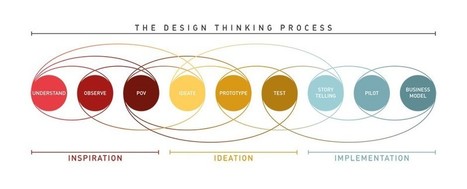



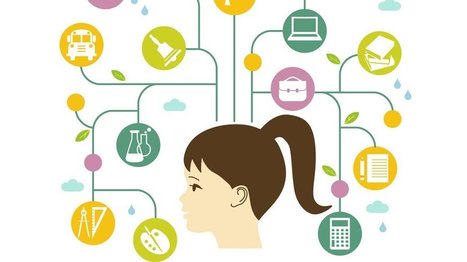


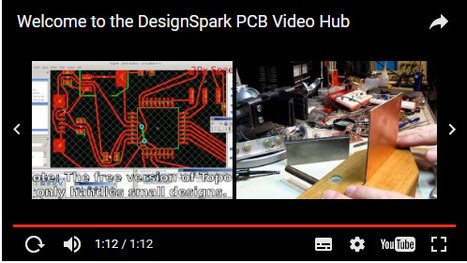
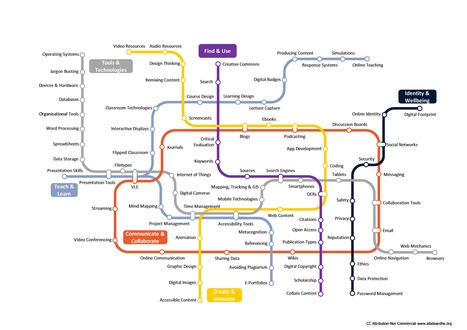












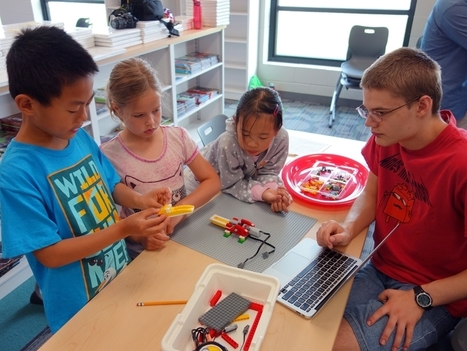
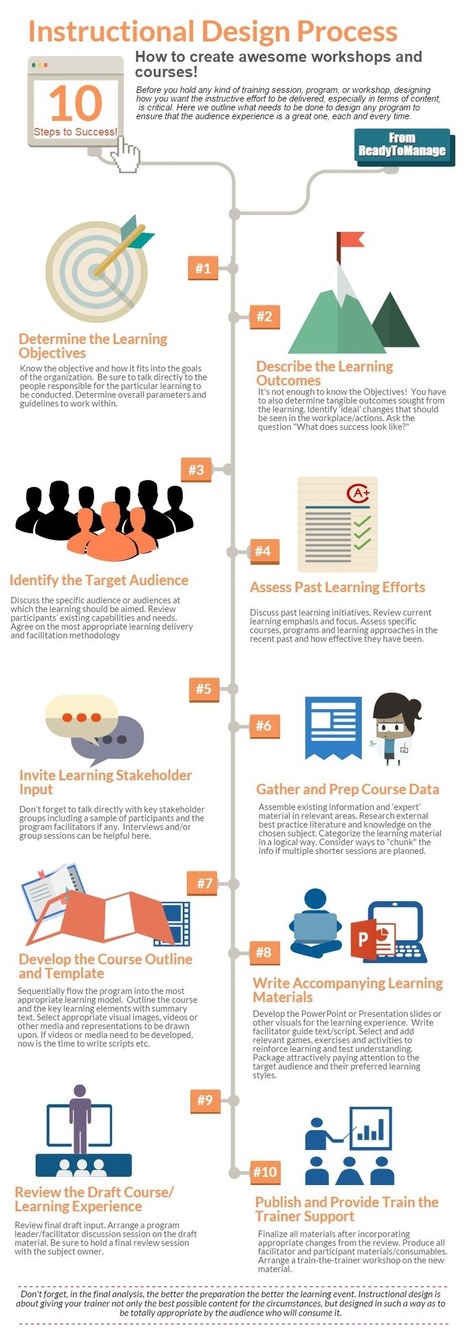


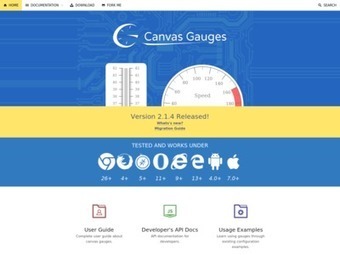


![The Right Classroom Design Fosters Innovation [#Infographic] | #ModernEDU | 21st Century Learning and Teaching | Scoop.it](https://img.scoop.it/YEuclk1gDYhgEodrILiHRTl72eJkfbmt4t8yenImKBVvK0kTmF0xjctABnaLJIm9)





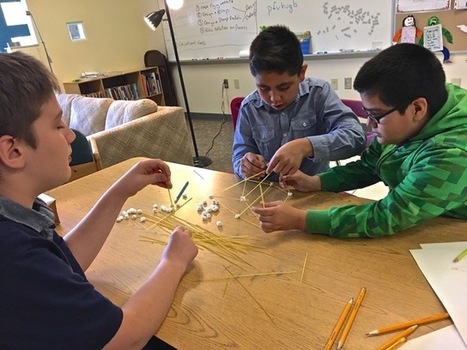




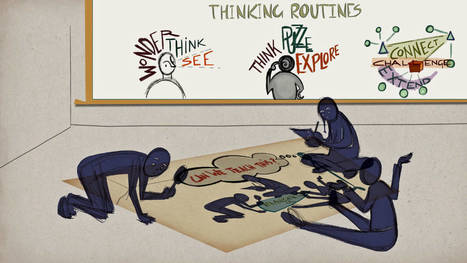












If you have just started embarking your journey through the Design Thinking process, things might seem a little overwhelming. This is why we have prepared a useful overview of the Design Thinking process, as well as some of the popular Design Thinking frameworks commonly used by global design firms and national design agencies.
To begin, let’s have a quick overview of the fundamental principles behind Design Thinking:
Design Thinking starts with empathy, a deep human focus, in order to gain insights which may reveal new and unexplored ways of seeing, and courses of action to follow in bringing about preferred situations for business and society.
It involves reframing the perceived problem or challenge at hand, and gaining perspectives, which allow a more holistic look at the path towards these preferred situations.
It encourages collaborative, multi-disciplinary teamwork to leverage the skills, personalities and thinking styles of many in order to solve multifaceted problems.
It initially employs divergent styles of thinking to explore as many possibilities, deferring judgment and creating an open ideations space to allow for the maximum number of ideas and points of view to surface.
It later employs convergent styles of thinking to isolate potential solution streams, combining and refining insights and more mature ideas, which pave a path forward.
It engages in early exploration of selected ideas, rapidly modelling potential solutions to encourage learning while doing, and allow for gaining additional insight into the viability of solutions before too much time or money has been spent
Tests the prototypes which survive the processes further to remove any potential issues.
Iterates through the various stages, revisiting empathetic frames of mind and then redefining the challenge as new knowledge and insight is gained along the way.
It starts off chaotic and cloudy steamrolling towards points of clarity until a desirable, feasible and viable solution emerges.
As we have seen from the definitions and descriptions, Design Thinking means many things to many people, and this theme persists into the practical implementation as well. There are a wide variety of process breakdowns and visualisations ranging typically between 3 and 7 steps. Each process step or phase embodies one or more of the core ingredients of design thinking that being, reframing, empathy, ideation, prototyping and testing. These different implementation frameworks or models might have different names and number of stages, but they embody the same principles laid out in the bullet points above.
Learn more / En savoir plus / Mehr erfahren:
https://www.scoop.it/t/21st-century-learning-and-teaching/?&tag=Design-Thinking
https://gustmees.wordpress.com/2014/10/03/design-the-learning-of-your-learners-students-ideas/